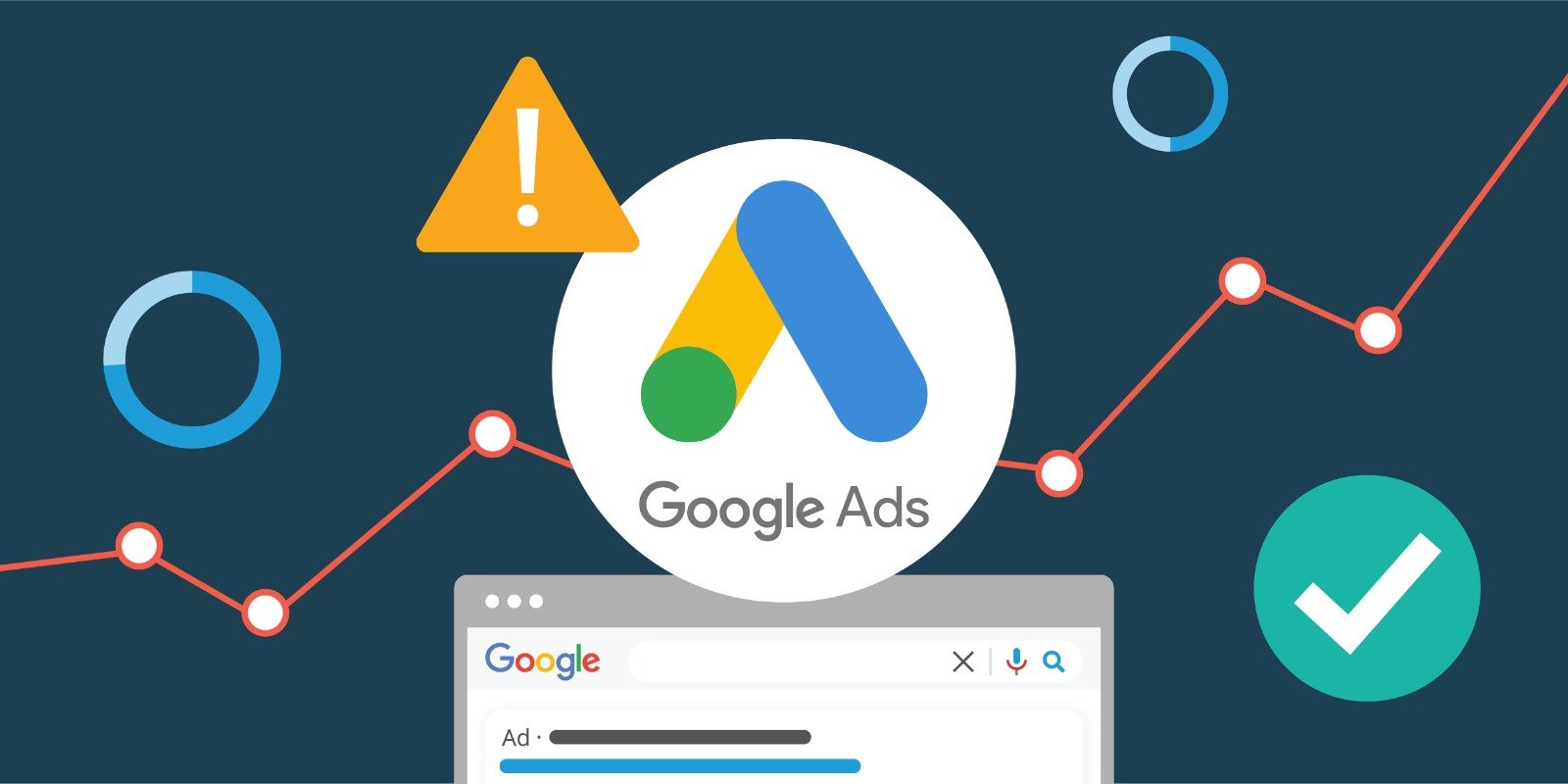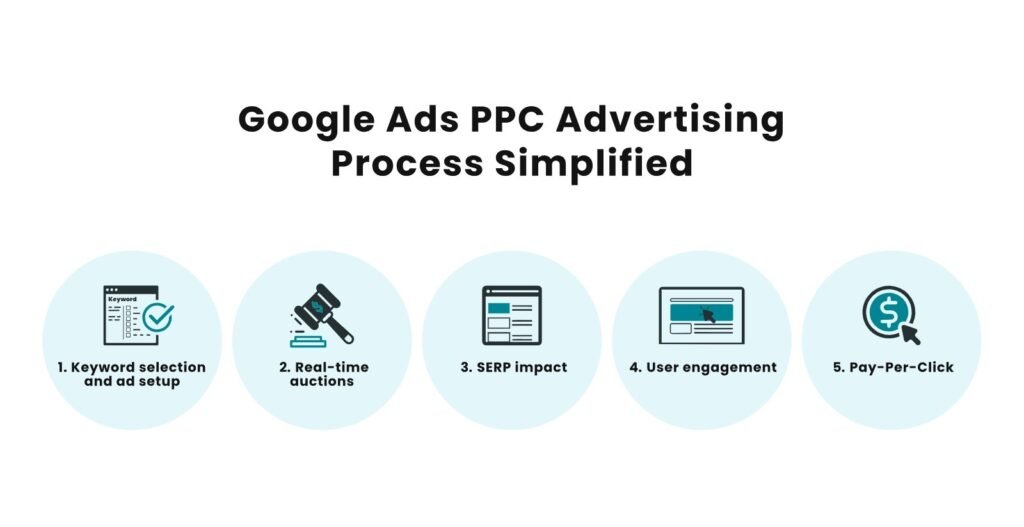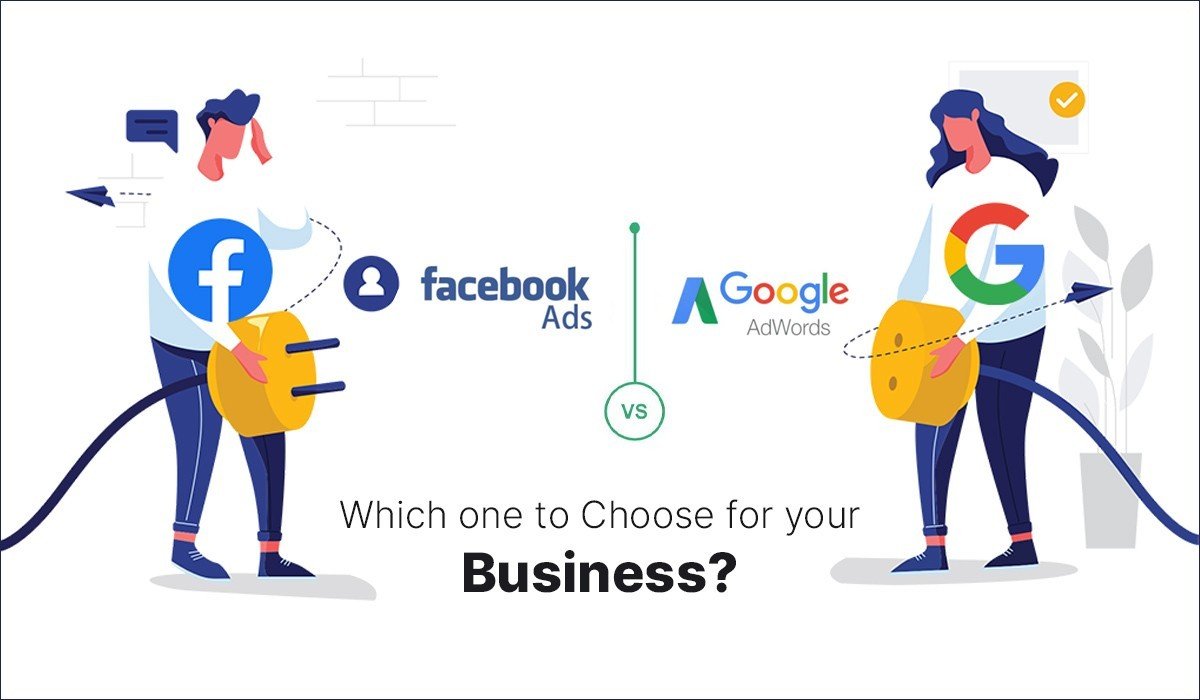Google ads and Facebook ads are two giant platforms that trump digital advertising into the digital sea. The type of target, reach, and methodology makes them completely different. Choosing the perfect one depends on your business goals, targeted audience, and budget. This article will shed light on differentiating features of Google Ads and Facebook Ads, the strengths and weaknesses, and how one can decide the best fit for their business.
What is Google Ads?
More commonly known as Google Ads, it is a pay-per-click (PPC) advertising platform that allows businesses to run ads on Google search engine result pages (SERPs), on YouTube, and other external partner websites. The most common form of Google Ads is search ads. They show ads when users search with specific keywords. For example, someone is most likely to find a Google ad from a sports brand selling running shoes if the keyword being searched is “best running shoes.”

Google Ads is a PPC advertising platform by which companies put advertisements on Google search engine result pages (SERPs), YouTube, and other partner websites. The most common ad type available in Google Ads is search ads.
They’re the ones showing ads when users search with specific keywords. So, for example, if someone’s searching for “best running shoes,” they’ll be likely to see a Google Search ad by a sports brand marketing running shoes.

Strengths of Google Ads:
- High-intent traffic: The person is searching for a solution and hence is likely to convert.
- Wide reach: Google handles billions of searches a day, allowing for a great audience to tap into.
- Multiple ad types: search ads, display ads, shopping ads, and video ads (for example, on YouTube).
- Advanced targeting: Keywords, location, device, demo, and remarketing targeting.
Weaknesses of Google Ads:
- Expensive for competitive industries: Popular keywords can have high cost-per-click (CPC).
- Complex to manage: requires proper keyword research, bidding strategies, and continuous optimization.
What are Facebook Ads?
Facebook ads or Meta ads operate on a social network advertising model as opposed to Google Ads that target people actively searching for something. Facebook Ads work through interest-based targeting. They are shown on Facebook, Instagram, Messenger, and the Audience Network. Various ad formats exist, such as image ads, video ads, carousel ads, and story ads. To illustrate, if someone is following fitness pages on Facebook, they might see ads for gym equipment even if they never searched for it. Hence, Facebook Ads are suitable for brand awareness and engagement marketing.

Strengths of Facebook Ads:
- Custom audiences: Facebook has gathered a wealth of data concerning user interests, activities, and demographics.
- Dynamic and pictorial advertising: Ideal for presenting images and videos of products and services.
- Lower cost per click: Facebook Ads generally have a lower cost than Google Ads for impressions and engagements. Robust retargeting: Bring back users who have interacted previously with ads or a visited site with ease.
Weaknesses of Facebook Ads:
- Lower purchase intent: People are surfing Facebook and not always on a shopping spree.
- Ad fatigue: Users become tired of seeing the same ad again and again, making it less attractive or ineffective over time
Google Ads vs. Facebook Ads: A Direct Comparison

| Feature | Google Ads | Facebook Ads |
| User Intent | High (people searching for solutions) | Low to Medium (people browsing content) |
| Ad Targeting | Keywords, location, device, demographics | Interests, behaviors, demographics, and lookalike audiences |
| Ad Formats | Search, Display, Shopping, Video (YouTube) | Image, Video, Carousel, Stories |
| Best For | High-intent leads, search traffic | Brand awareness, social engagement |
| CPC (Cost per Click) | Higher | Lower |
| Conversion Rate | Often higher due to intent | Works well for brand discovery & remarketing |
| Learning Curve | Steeper (requires keyword strategy & bid management) | Easier to launch and test campaigns |
Which One Should You Use?

Use Google Ads if
- High Google-intent search traffic needs to be captured (i.e., legal service, SaaS, or something on home repair).
- Lead generation and sales conversion are the priorities here as opposed to brand awareness.
- You have a sufficient budget to compete for lucrative keyword categories that exist in your domain.
- It’s those goods or services that are actually on Google search
Use Facebook Ads if
- You would like to improve on brand awareness and social audience engagement.
- Your business is heavily dependent on visual marketing (fashion, beauty, fitness, food).
- You are on a limited budget and want relatively inexpensive traffic.
- You also want to retarget previous website visitors and keep them engaged.
Best Strategy? Combine Both!
Instead of choosing just one platform, many successful businesses use both Google Ads and Facebook Ads together to create a full marketing funnel.

- Use Facebook Ads for brand awareness and engagement.
– Run video ads, carousel ads, and story ads to attract attention.
– Target cold audiences based on interests and behaviors - Use Google Ads to capture high-intent searchers.
– Bid on keywords that indicate strong buying intent
– Use Google Shopping Ads for e-commerce products. - Retarget users across both platforms.
– Show Facebook ads to people who visited your website via Google Ads
– Use Google Display Ads to re-engage people who interacted with your Facebook Ads.
By integrating both strategies, businesses can build brand awareness on Facebook while converting high-intent traffic on Google, leading to maximum results
Final Thoughts
Distinct advantages mark Google Ads and Facebook Ads respectively. Facebook ads can encourage hasty conversion from someone actively seeking out; Google, on the other hand, has been shown to create the loyal audience that will fill in the gap of eventually converting visitors into customers. In the end, it would depend on what you want to achieve when it comes to advertising; budgets vary as well as the target audiences. If at all possible, trying out both Google Ads and Facebook Ads will give options on how to establish a really great funnel in capturing audiences at different levels of the buying cycle.

